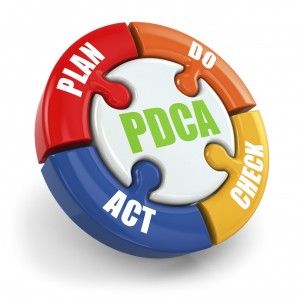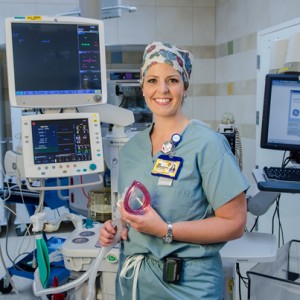If you don’t know what an “A3” is, don’t worry. When I started at University of Michigan Health System, I didn’t either. When I first saw an A3 meeting on my calendar, I asked “What group is that?”
There were so many groups with different acronyms! Turned out it was a meeting with a few colleagues to update our status report on major UMHS IT initiatives. We were using an A3 format for our report.
So what is an A3? It is a tool used as part of Plan-Do-Check-Act (PDCA). The A3 name actually comes from the paper size (11 x 17 sheet) that tells a story laid out from the upper left-hand side to the lower right.
Telling the story of a problem on an A3 includes looking at the background (why and what), describing its current condition (where things stand), and doing a root cause analysis. And then, establishing goals and targets, proposing countermeasures, making an action plan and determining success metrics. Continue reading


 It is a weekly discipline. But knowing that the content is appreciated and has an impact keeps me going. Writing has also been a great method of reflection for me –
It is a weekly discipline. But knowing that the content is appreciated and has an impact keeps me going. Writing has also been a great method of reflection for me – 
 Creating sustainable Health Information Exchanges (HIE), not to be confused with a Health Insurance Exchange, is what we are all focused on now. The Office of the National Coordinator for Health IT (ONC) published “Connecting Health and Care for the Nation: A Shared Nationwide Interoperability Roadmap” for public comments earlier this year. There has been progress over the years but we still have a long ways to go.
Creating sustainable Health Information Exchanges (HIE), not to be confused with a Health Insurance Exchange, is what we are all focused on now. The Office of the National Coordinator for Health IT (ONC) published “Connecting Health and Care for the Nation: A Shared Nationwide Interoperability Roadmap” for public comments earlier this year. There has been progress over the years but we still have a long ways to go. more women to go into the field. I recently did a fireside chat with Kate Catlin, the organizer of Women Rising, and about 30 young women in downtown Detroit. It was the first in a new UpRising series where they invite in “high-powered women in technology” they want to learn from.
more women to go into the field. I recently did a fireside chat with Kate Catlin, the organizer of Women Rising, and about 30 young women in downtown Detroit. It was the first in a new UpRising series where they invite in “high-powered women in technology” they want to learn from. But, twenty minutes into the flight, the pilot told us there were problems with the landing gear; the safest thing to do was to return to the Boston airport. He told us he’d know more after we landed. Problems with the landing gear but we were going to land OK? Of course the next half hour was one of the longest ever. We did land safely, de-boarded and waited for news of when we’d depart.
But, twenty minutes into the flight, the pilot told us there were problems with the landing gear; the safest thing to do was to return to the Boston airport. He told us he’d know more after we landed. Problems with the landing gear but we were going to land OK? Of course the next half hour was one of the longest ever. We did land safely, de-boarded and waited for news of when we’d depart. Over the years, individual and organizational sponsors have provided support for computers at patient bedsides, medically safe camps for children with serious health issues, assistive devices for children with special needs, and many more important projects and services.
Over the years, individual and organizational sponsors have provided support for computers at patient bedsides, medically safe camps for children with serious health issues, assistive devices for children with special needs, and many more important projects and services. It’s when I have thrown my briefcase and stacks of work for the weekend or the evenings on the seat. Or I’m out of my office at hospital meetings for several days in a row and need various files with me. The passenger seat becomes my file cabinet until I’m back in my office.
It’s when I have thrown my briefcase and stacks of work for the weekend or the evenings on the seat. Or I’m out of my office at hospital meetings for several days in a row and need various files with me. The passenger seat becomes my file cabinet until I’m back in my office. Innovation is defined as “the introduction of something new OR a new idea, method or device.”
Innovation is defined as “the introduction of something new OR a new idea, method or device.”